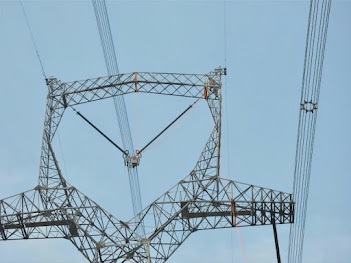Differences Between Transmission Lattice Tower and Transmission Pole
Differences Between Transmission Lattice Tower and Transmission Pole
1. Structure: A transmission lattice tower is a tall structure made of steel or reinforced concrete. It consists of multiple legs or members interconnected in a lattice-like pattern, forming a rigid framework. The lattice structure provides excellent strength and stability.
2. Height and Load Capacity: Lattice towers are typically taller than transmission poles and can reach heights of several hundred feet. They are designed to support heavy loads, including multiple sets of power transmission lines, conductors, and additional equipment such as lightning arresters and insulators.
3. Construction: Lattice towers are assembled on-site using prefabricated sections or individual components that are bolted or welded together. The construction process involves lifting and positioning each section using cranes or specialized equipment.
4. Wind Resistance: Lattice towers are designed to withstand high wind speeds. The open lattice structure allows wind to pass through, reducing the overall wind load on the tower. The triangular or square lattice configuration provides stability and minimizes the risk of structural failure due to wind-induced vibrations.
5. Maintenance: Lattice towers require regular inspection and maintenance due to their complex structure. The lattice members and connections need to be inspected for corrosion, fatigue, or damage. Maintenance tasks may involve climbing the tower using specialized equipment and may require more time and effort compared to transmission poles.
Transmission Pole:
1. Structure: A transmission pole, also known as a utility pole or power pole, is a vertical structure typically made of wood, concrete, or steel. It consists of a single pole or column that supports power transmission and distribution lines.
2. Height and Load Capacity: Transmission poles are generally shorter than lattice towers, typically ranging from 30 to 120 feet in height. They are designed to support one or a few sets of power transmission lines, depending on the application and voltage level.
3. Construction: Transmission poles are typically pre-manufactured and transported to the installation site. They are installed by digging a hole and setting the pole vertically in the ground. The pole is secured using concrete or backfill material to provide stability.
4. Wind Resistance: Transmission poles are designed to withstand moderate wind speeds. The single pole structure offers less wind resistance compared to lattice towers. However, the design incorporates factors such as pole diameter, reinforcement, and foundation depth to provide adequate stability against wind forces.
5. Maintenance: Transmission poles require regular inspection and maintenance, but they are generally easier to access and maintain compared to lattice towers. Maintenance tasks can be performed from the ground or using climbing equipment, depending on the height of the pole. Wooden poles may require periodic treatment to prevent decay and insect damage.
In summary, the main differences between transmission lattice towers and transmission poles lie in their structure, height, load capacity, construction process, wind resistance, and maintenance requirements. Lattice towers are taller, have higher load capacity, and are more complex to construct and maintain. Transmission poles are relatively shorter, have lower load capacity, and are simpler in design and maintenance. The choice between the two depends on factors such as the required height, load capacity, site conditions, and project budget.





评论
发表评论